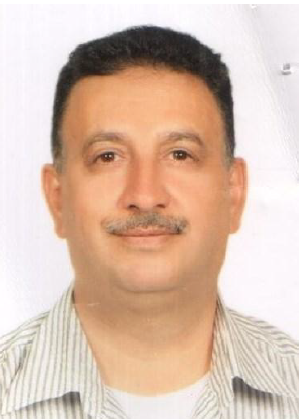-
Special Rules for the Seismic Assessment and Rehabilitation Design of Existing Buildings: Turkish Seismic Rehabilitation Code- 2017
Lecture Time: (8:30 - 11:00) Am
- Instructor Name: Haluk Sucuoğlu

Abstract:
Data retrieval, knowledge levels, damage levels, seismic demand analysis with linear and nonlinear procedures, deformation limits, seismic performance definitions.
Seismic rehabilitation techniques for RC and masonry buildings: Strengthening of columns and beams, strengthening of masonry infill walls with mesh reinforcement and FRP, strengthening of frames with added shear walls, FRP retrofitting of columns.
-
Health Monitoring of Damaged Transportation Infrastruture
Lecture Time: (8:30 - 11:00) Am
Instructor Name: Shad M. Sargand

Abstarct:
Transportation infrastructure, e.g. roads, bridges, tunnels, drainage, etc., may be damaged due to excessive usage, use after end of design service life, natural disaster (wind, earthquake, storm), accident, or man-made catastrophe. To return infrastructure to usable/functional condition, several steps are needed. The first step is to use non-destructive testing (NDT) and modelling to evaluate the capacity, integrity, and condition of the infrastructure in its present state. Types of NDT equipment available include falling weight deflectometer (FWD), lightweight deflectometer (LWD), Ground Penetrating Radar (GPR), Seismic Analysis, etc. Some of these have been successfully used in conjunction with modelling in various countries including USA and Afghanistan. Once the condition is determined, the expected future service life of the structure can be estimated, along with steps for repair and maintenance that may increase the estimated service life. If the structure cannot be repaired, then the question is whether it should be reconstructed or replaced. If the structure is to be reconstructed or replaced, there will be a lot of material to recycle, which can be used elsewhere. Some case studies will presented.
-
Enhancement of the Efficiency of FRP Systems in Strengthening Concrete Bridges and Buildings
Lecture Time: (12:00 - 3:00) Pm
Instructor Name: Riadh Al-Mahaidi

Abstarct:
Alongside the escalating demand to increase the strength of existing structures, new strengthening technologies have evolved such as the use of fibre reinforced composite materials (FRP’s) as externally bonded reinforcement. In spite of their potential benefits, use of externally bonded FRP systems is hampered by the occurrence of premature debonding. Improving the efficiency of FRP systems is an area of ongoing research still in its infancy. However, promising results have been achieved by the use of anchorage systems such as: bidirectional fibre patch anchors applied to the ends of the FRP to improve the FRP-to-concrete bond performance. This workshop will focus on the development and application of such efficiency enhancement measures with design examples and field applications.
-
Training Course on Use of Jordanian Manual for Post Disaster Damage and Safety Assessment of Buildings
Lecture Time: (12:00 - 3:00) Pm
Instructor Name: Sami Habahbeh

Abstarct:
1. Introduction about manual’s objectives, use and justification, including a brief background on historic disasters events/ records of Jordan, namely, “Earthquakes, Fires and Floods”.
2. Review of manual’s contents/ chapters, including pre- safety measures, damages categorization, building’s disaster post assessment concept, methodologies and classification.
3. Examples/ training on the usage of manual’s adopted assessment / classification forms & placards through demonstrative applications.
-
Introduction to Reinforced Masonry Structural Design
Lecture Time: (4:00 - 7:00) Pm
Instructor Name: Mohamed ElGawady

Abstarct:
This course covers an introduction to reinforced masonry design according to TMS 402/602, ASCE 7, IBC. The course includes introduction to materials and assembly types, constructability considerations, structural masonry components, and model code requirements to ensure adequate load resisting buildings.
Tentative Course Topics
- Masonry Materials
- Masonry Construction
- Masonry Codes & Standards
- Masonry Loads & Analysis
- Beam Design
- Column Design
- Seismic Design of Shear Walls (In-plane Walls)
- Wind Design (Out-of-plane Walls)
- Prestressed masonry design
-
Enabling Environment for Decentralized Wastewater Management
7/5/2017
Lecture Time (9:00 Am- 16:00 Pm)

Overview. Jordan is facing major challenges due to its scarce renewable water resources and increased population growth, be it natural or otherwise. Coupled with the fragile arid environment and its low resilience in the face of different activities, decision makers are left with major responsibilities to achieve safe and dependable water supply in the future. Climate change also threatens water availability in Jordan and its impact leads not only to a reduction in the quantity of water resources, but also has an impact on water quality.
A main response for water scarcity and climate change makes best use of water resources through “integrated water resources management”. In this regard, reallocating water towards domestic and industrial sectors -rather than agriculture- may be a critical way to adjust to water scarcity and enhance water availability. Jordan has established a stand-alone reallocation policy and substitution policy on 2015. The trend is reallocating fresh water for domestic use and allocating non-conventional water, such as treated wastewater, to agriculture.
Full valorization of wastewater in agriculture requires integrated planning, which is likewise critical to meet country’s obligations to many SDGs, particularly SDG6 on water and sanitation. Notwithstanding that Jordan has a good match between collected and treated wastewater, there is still a high demand outside large cities and in newly urbanized areas to receive better services. The country had established a policy to provide proper sanitation services for communities with population less than 5,000 inhabitants. It should be noted that the implementation of decentralized wastewater management systems calls for an enabling environment that starts with governmental support and ends at socio-cultural acceptance of such management scheme.
Symposium. The Ministry of Water and Irrigation in cooperation with GIZ’s ACC project and Jordan Engineers Association are pleased to announce a symposium on enabling environment for the implementation of decentralized sanitation management systems. The symposium will take place on May 7th, 2017 at the Landmark hotel, Amman. It is planned as one of the activities associated with the 7th Civil Engineering Conference on reconstruction of damaged zones and will give the audience an introduction to the requested enabling environments for the implementation of decentralized wastewater management options. The symposium will host experts from Canada, Germany, Egypt and Jordan to discuss all main themes of the enabling environment. It will be divided into two main presentation sessions followed by a panel discussion where audience will have the chance to further discuss the topic and interact with the speakers.